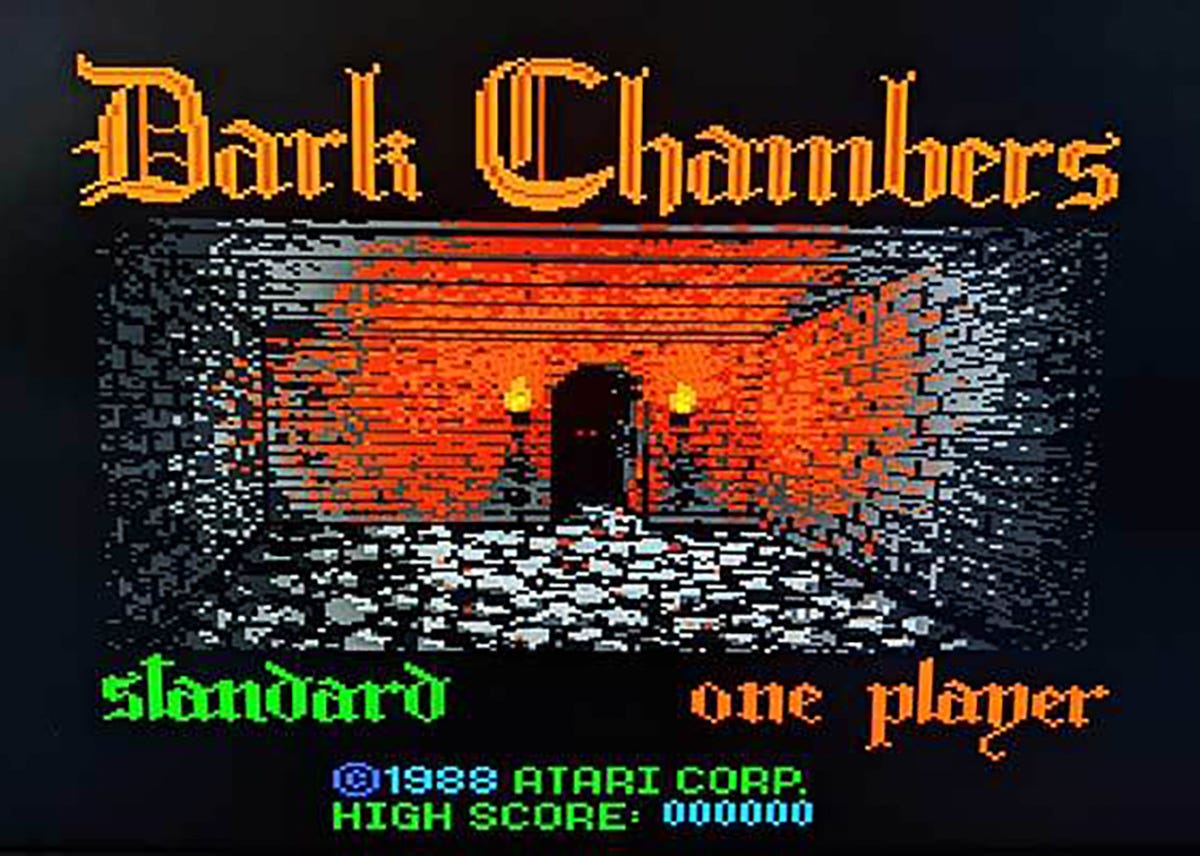Dandy, The Games of Life, and Dark Tower
I have recently jumped into the world of retro gaming and computing via MISTer FPGA. It’s been a wonderful way to emulate older hardware without adding more devices to my shelves. This week another classic console was released for the MISTer, the Atari 7800. With that, I was able to play a video game I have not played in years, Dark Chambers.
While playing the game this time, I remembered discussing its predecessor Dandy and its arcade cousin, Gauntlet, and took a closer look at the former.
What was the video game, Dandy?
Dandy was written in 1982 as a senior thesis by Jack Palevich. Palevich was inspired by, among many sources, Dungeons & Dragons and John Conway’s Game of Life. The name Dandy is itself a combo of the shorthand for Dungeons & Dragons, D and D.
The idea for Dandy was to have a five-player game, with four active players and one person acting as a Dungeon Master, basically playing as the enemy of the four other players.
In my mind the fifth player would act like a paper-and-pencil game DM, moving the story along and triggering events like attack-waves of monsters.
– Jack Palevich
Under time pressure, the active fifth player was abandoned and Dandy would become one of the first video games to offer simultaneous four-player cooperative play (instead of five). It is well-remembered for this gaming paradigm and its spirit of fantasy adventuring, but something even more interesting is happening in the background.
In John Conway’s Game of Life, the game examines the playfield and decides if a cell should be alive or dead based on a set of rules. This idea was expanded in Dandy with rules for all elements of the game. For example, if a monster was on the board and there was an empty space between it and the player, it would automatically move to that space.
It was a VERY clever way to build a game.
John Conway’s Game of Life
The Game of Life is a system of cellular automaton devised by mathematician John Horton Conway in 1970. While referred to as a “game,” it is really more of a simulation of life. You play the game by creating an initial configuration and then letting it run.
As a cellular simulator, it attempts to follow a simple set of rules and plays out until all the cells have died. The cells are placed on a grid and then will adhere to the following rules.
Any live cell with fewer than two live neighbours dies, as if by underpopulation.
Any live cell with two or three live neighbours lives on to the next generation.
Any live cell with more than three live neighbours dies, as if by overpopulation.
Any dead cell with exactly three live neighbours becomes a live cell, as if by reproduction.
For more info about Conway’s Game of Life and learn about its amazing potential? Check out this short documentary on it.
While Conway’s Game of Life is fascinating, it is hardly my favorite game of life.
The Other Game of Life
The modern version of Milton Bradley’s Game of Life was released in 1960. It was loosely connected to an 1860 game by Milton Bradley, called The Checkered Game of Life.
The 1960 version of the game is what is still being sold today, with minor changes. In this Game of Life, you spin a numbered wheel and then move your car-themed game piece around a twisting road. Along the way, you encounter gaming elements that help define your “life” as you move toward the finish line.
The creation of the game is credited to Bill Markham, but the family of Markham took the current owners of the game Hasbro to court over compensation for his work. After years, a judge ruled in favor of Hasbro.
If you do a search of board games and lawsuits, the number of results is surprisingly large. So if you are a game designer or game publisher, make sure you read those contracts. One lawsuit that caught my attention was from several decades back and had to do with the now legendary game, Dark Tower.
Dark Tower
Dark Tower was an electronic board game released by Milton Bradley in 1981. In it, one to four players try to build an army, collect keys to the Tower, and defeat the evil within it.
It was a remarkable game that appealed to my fantasy nerd sensibilities. It also helped that they brought on Hollywood icon Orson Welles to do the commercials for it.
But what about this lawsuit?
In 1985, game developers Robert Burton and Allen Coleman sued Milton Bradly. They had submitted a game to Milton Bradley many years earlier called, “Triumph.” That game has an electronic tower at its center. The lawsuit would go back and forth and eventually, Burton and Coleman would get a settlement of $700,000 for their work.
Dark Tower didn’t last very long but was well-remembered by gamers who have been clamoring for a reprint. So it is no surprise that there was a successful Kickstarter to make a sequel to this much-storied game called, Return to Dark Tower. It is due to be released this year and it looks amazing.



